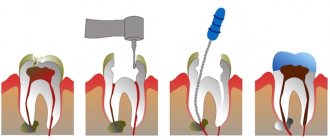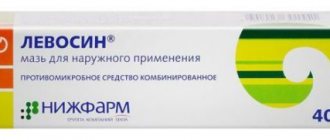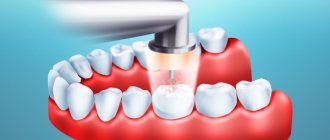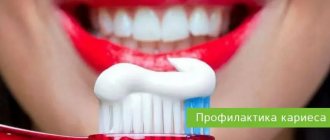Electrotherapy is an extensive section of physiotherapy, which includes techniques such as galvanization and electrophoresis, diadynamic therapy and amplipulse therapy, interference therapy and faradization, darsonvalization and ultratonotherapy, electrosleep and electrical stimulation.
Currents vary in voltage, frequency, intensity and shape. They are prescribed by a doctor according to an individual program for each patient, taking into account factors such as the underlying disease, concomitant pathologies and complications. The choice of a specific technique depends on the patient’s age, individual skin sensitivity and many other factors.
One of the treatment methods is called fluctuarization, the basis of which is the use for therapeutic purposes of pulsed currents of a low frequency sinusoidal shape - from 40 to 2000 Hz - and an intensity from 1 to 40 mA.
Features of fluctuarization
According to the mechanism of therapeutic effects, fluctuarization is similar to such types of electrotherapy as amplipulse therapy (AMP) and diadynamic therapy (DDT). The difference is that when using fluctuarization, the likelihood of the skin becoming accustomed to the stimulus is reduced (due to its special characteristics - asynchrony, aperiodicity and randomness), this makes it possible not to increase the current strength during the procedure.
For some pathologies, this type of electrotherapy has shown greater effectiveness than diadynamic therapy and SMT therapy. In addition to the above, another distinctive feature of fluctuarization is the appearance of an analgesic effect already during the procedure due to the effect of asymmetric currents on the receptors.
High voltage currents
Darsonvalization
The most widely used method of exposure to pulsed alternating sinusoidal current of high frequency (110 and 440 kHz), high voltage (20 kV) and low current (0.02 mA). High-frequency pulse current (110 kHz) is used for local effects and is called local darsonvalization. It has an antispastic effect on the tone of peripheral vessels and smooth muscles, improves tissue trophism and reduces pain.
To carry out local darsonvalization, the Iskra-1 and Iskra-2 devices are used. 8 vacuum electrodes are attached to the device, among them rectal, large and small vaginal.
Local darsonvalization affects the area of the external genitalia and the perineum. They use a small mushroom-shaped electrode and a labile technique. First, the labia minora and majora are affected, then the perineum. The power of exposure is adjusted until the patient feels a slight warmth. Duration 6-10 minutes. Procedures are carried out daily. The course of treatment is 3-5 procedures.
During the vaginal procedure, a vaginal or large rectal electrode is inserted to a depth of 8-12 cm. The power of exposure is adjusted until the patient feels a slight warmth. Duration 10-15 minutes. Procedures are carried out daily or every other day. The course of treatment is 10-20 procedures.
During general darsonvalization, the patient is inside a large solenoid, through the turns of which a pulsed high-frequency (440 kHz) current passes. General darsonvalization helps slow down blood clotting, has a positive vasotropic effect, and enhances tissue metabolism. By reducing cerebral vascular tone, fatigue and headaches are reduced, sleep, mood, and performance are improved.
Rectal procedure. The rectal electrode is inserted into the rectum to a depth of 6 cm. The remaining parameters of the procedure are the same as for the vaginal procedure. The course of treatment is 10-20 procedures.
Indications
The fluctuarization method is widely used to treat dental diseases.
There are many indications for the use of fluctuarization, some of which are listed below.
- Osteochondrosis of the spine with radicular syndrome, radiculopathy and herniated intervertebral discs;
- Exacerbation of arthritis and arthrosis, including deforming arthrosis;
- Neuralgia;
- Chronic gynecological diseases outside the acute phase;
- Exacerbation of pulpitis, periodontitis, alveolitis, pain after filling teeth;
- Condition after surgery for acute purulent inflammatory processes.
Effect of physiotherapy
Physiotherapeutic procedures have a normalizing effect on metabolism, redox processes, regulation of internal organs, lymph and blood circulation. In addition, they mobilize the body's defenses.
Physiotherapy is part of the comprehensive treatment of diseases. As a rule, its methods are used at the stage of remission, but can also be used in the acute stage. The main advantage of this direction is the absence of exposure to drugs and chemicals. Thus, the high effectiveness of physiotherapy is combined with the safety of its use.
Contraindications
As with any type of treatment, fluctuarization has a number of contraindications in which you should refrain from using this type of physiotherapy. These include:
- Malignant neoplasms;
- Meniere's syndrome;
- Decompensation of chronic pathologies of the cardiovascular system, mental illnesses;
- Tendency to bleeding;
- Active tuberculosis;
- Fever;
- The presence of foreign metal bodies and a pacemaker in the body;
- Impaired sensitivity of the skin;
- Individual intolerance to the method;
- Severe cachexia and general serious condition of the patient.
Types of physiotherapy with pulsed current
The physiotherapeutic procedure itself, associated with the influence of pulsed current, is an effect alternating with rest phases. The amplitude and rhythm of the current gradually increase, reach a high point, and then smoothly decrease to zero.
The current pulse is supplied through electrodes that are placed at certain points on the patient's body. The impact of the current is calculated so that the doctor can visually observe muscle contraction. In this case, the impact should not cause any discomfort. The current strength is usually 10-15 mA, the procedure lasts 15 or 30 minutes. As a rule, 15-20 such procedures are prescribed.
Pulsed currents are used in various types of physiotherapy. These include:
- Electrosleep;
- Diadynamic therapy;
- Interference;
- Amplipulse therapy;
- Electrical stimulation;
- Fluctuarization.
During electrical sleep, portions of low-intensity current pulses affect the brain receptors, normalizing the functions of the central nervous system. In this case, the pulse frequency varies from 1 to 150 Hz, and the duration is 0.2-0.3 ms. Bifurcated electrodes are applied to the patient's eyes and mastoid process.
To conduct diadynamic therapy, low-frequency pulses of 50-100 Hz are used. The impact can be separate or alternate between long and short periods. The epidermis resists this action, resulting in hyperemia, the walls of blood vessels dilate, and blood flow increases. The therapeutic effect of the procedure is associated with stimulation of the nervous system and muscle tissue.
Diadynamic therapy activates the circulatory system, metabolic processes are enhanced, and pain is noticeably reduced. This method is often used to treat pathologies of the musculoskeletal system and the peripheral nervous system.
Interference is the effect of low-frequency pulsed currents of 1-150 Hz of constant or variable frequency. The technique is used in the treatment of pathologies of the peripheral nervous system at subacute stages.
Amplipulse therapy is carried out with simulated sinusoidal currents of low frequency 10-150 Hz; mid-frequency currents of 2000-5000 Hz are also used. The current penetrates the skin, does not cause irritation, but has an exciting effect on muscle and nerve fibers. This type of physiotherapy is prescribed for problems with the musculoskeletal system, injuries, pathologies of the nervous system and other diseases.
Electrical stimulation is used to excite or significantly enhance the functioning of organs and systems. The most common options are stimulation of motor muscles, nervous system and cardiac activity. This type of impact helps maintain the vital activity and nutrition of muscle tissue, prevent its atrophy and strengthen it during rehabilitation or recovery after forced inactivity.
Fluctuarization is exposure to alternating currents of low frequency 10-2000 Hz, fully or partially rectified. They irritate and excite tissues, increasing the flow of lymph and blood.
Current forms during fluctuarization
There are three forms of current used in this type of electrotherapy:
- Alternating symmetrical current. This is a bipolar fluctuating current, the pulses of which change spontaneously in amplitude and frequency in both positive and negative polarity. This type of therapy has a pronounced effect on deep tissues - internal organs, lymphatic and blood vessels, muscles and subcutaneous fat.
- Bipolar asymmetric current is a partially rectified current, in which asymmetric oscillations also change asynchronously in frequency and amplitude, but are predominantly ejected in negative polarity, with each “positive” emission corresponding to 2-3 “negative” ones (in polarity).
- Unipolar rectified current, in which all the same spontaneous currents, chaotically varying in frequency and amplitude, are exclusively in negative polarity. According to its characteristics, this form of current is similar to galvanic current; it is a constant pulsating current. Due to the unipolarity of this type of current, it is possible to combine electrotherapy with the administration of certain medications.
How it works?
Electric current affects tissue, passing through the intercellular fluid through the lymphatic and circulatory systems. When the current reaches its maximum values, muscle fibrillation occurs.
A subsequent increase in signal intensity promotes chaotic twitching in the muscle fibers. The vessels of the circulatory and lymphatic systems in the area of influence dilate, which helps improve blood circulation.
The temperature of the mucous membranes of the oral cavity increases by 0.4 degrees, which is considered normal. This effect can last for half an hour after the session. The chaotic nature of the vibrations increases the irritation factor on the treated area, which leads to a decrease in the adaptability of tissues to electrical influence.
The procedure has the following properties:
- anesthesia;
- elimination of inflammatory processes;
- myostimulating effect at the local level, helping to improve the functionality of muscle fibers
- trophic-regenerative function, ensuring the supply of nutrients to tissues to accelerate recovery.
As for the use of the mechanism in dental practice, it is aimed primarily at analgesic, anti-inflammatory, and absorbable effects.
Therapy devices
In clinical practice, a large number of instruments are used to carry out the procedure. The most famous device for fluctuarization is “ASB-2-1”, however, in recent years its use has decreased significantly due to the need for additional grounding of the device during operation.
The most frequently used devices in clinical practice are: therapeutic equipment “FT-30-05” and “ASB-2M”, a device used in dental practice “FS-100”. The latter device is often used to combat toothache and to treat inflammatory gum diseases. ASB-2M differs from its analogues in its ability to use various types of electric current and modes of exposure.
The choice of a specific device for physiotherapy is determined by the attending physician depending on the patient’s indications and contraindications.
Carrying out the technique
To carry out fluctuarization, various types of devices are used. The procedure can be carried out both in a medical institution and at home. It is important to note that when performing the method at home, the patient or people close to him must undergo special training in a physiotherapy room. Otherwise, the treatment may cause undesirable consequences in the person.
At the beginning of treatment, the doctor informs the patient about the upcoming treatment session and explains to him the rules of the procedure. After this, fluctuarization is performed according to the following algorithm:
- The patient lies down or sits on a couch or chair, respectively.
- Electrodes are placed at the intended site of influence. The number of electrodes, as well as their shape, are determined by the localization of the pathological process and the available equipment.
- The device is always turned on at minimum current values. After this, the current strength gradually increases until the patient feels a slight tingling sensation on the skin under the electrodes.
- At the end of the session, the device turns off and the electrodes are removed from the surface of the person’s body.
- If a procedure is necessary to treat dental problems, small area electrodes soldered together are used.
The duration of one physiotherapeutic procedure is from 5 to 40 minutes. The specific time of the session depends on the disease identified in the patient and the severity of the symptoms present. If physical therapy is performed for children, the duration of the session is halved. The number of procedures in a therapeutic course is 5-15 with an interval of 1-2 days, which is necessary for a full tissue response to the action of electric current.
If a repeat course is necessary, it is necessary to take a break of one to two months, after which the attending physician re-examines the patient, assessing his general condition.










